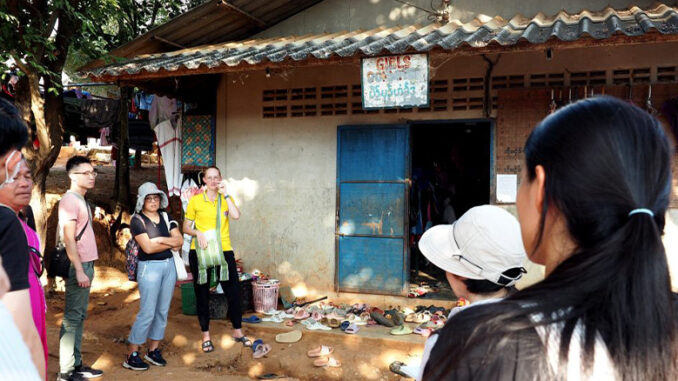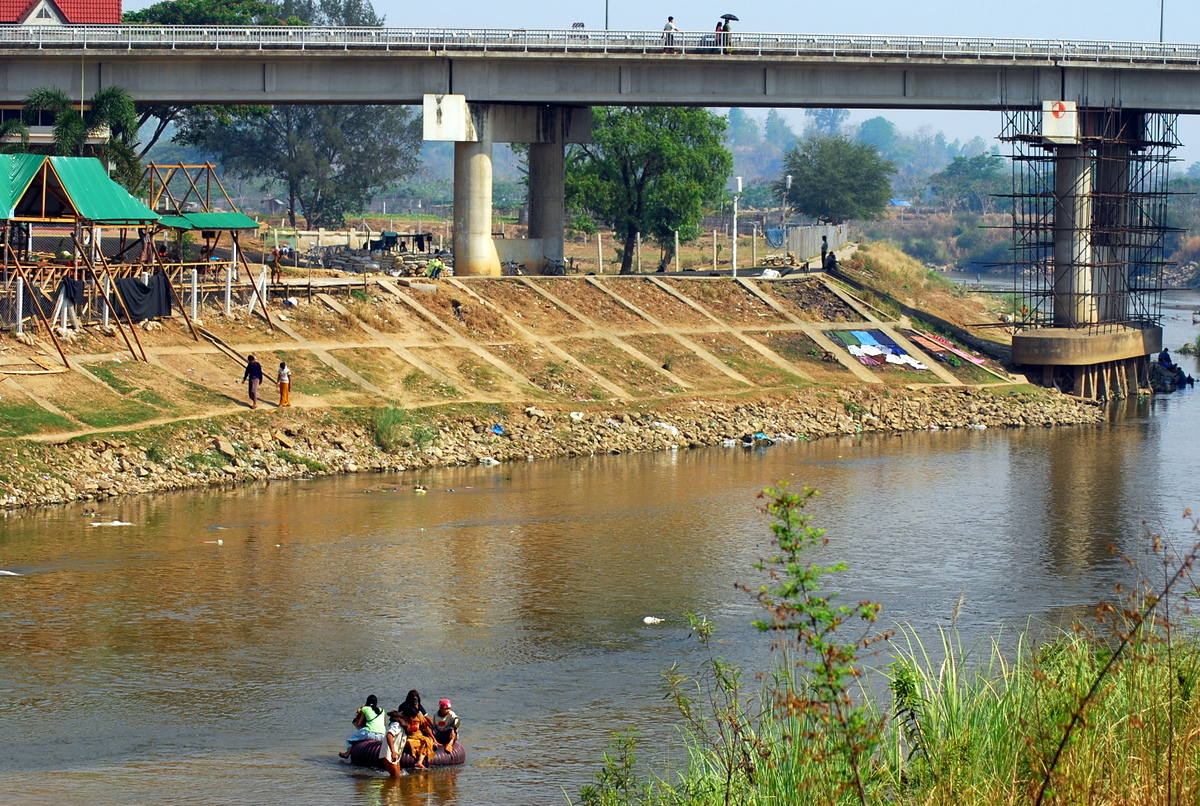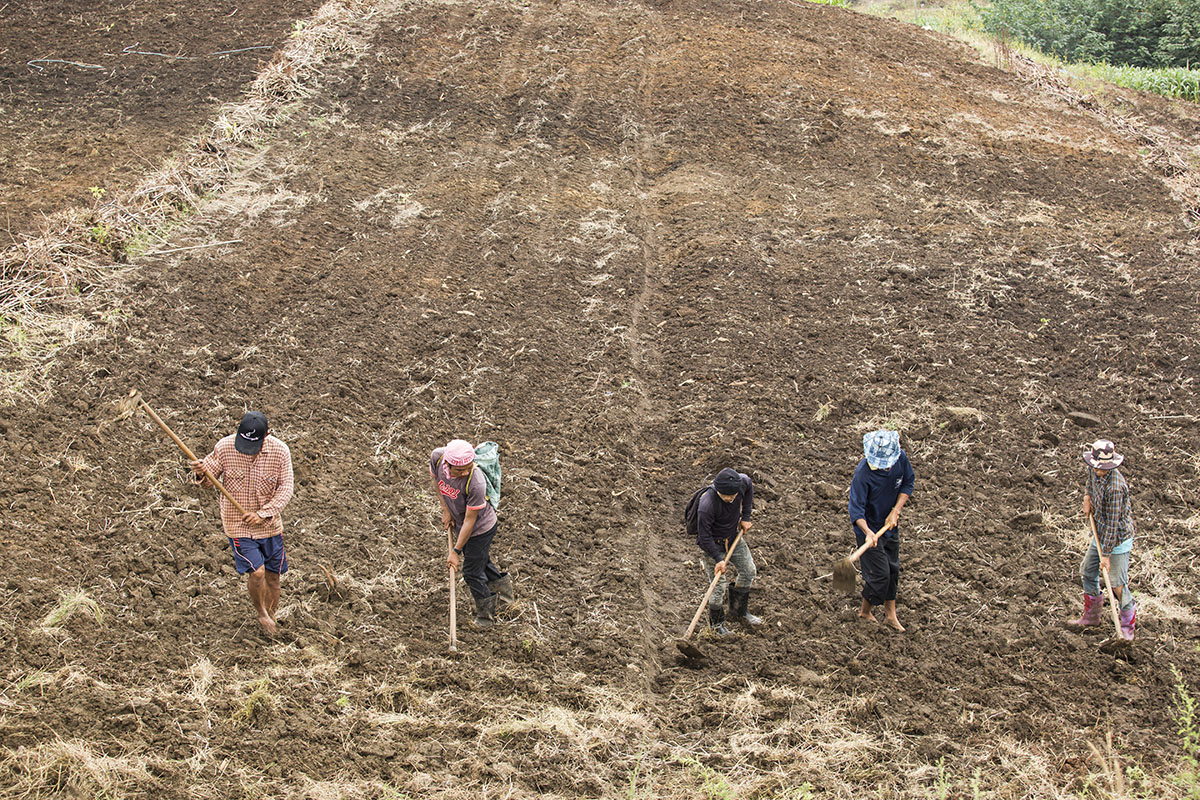
Having studied the migration of young Yunnanese migrants along the Thai-Burma 1 border for several years, the 47th Southeast Asia Seminar gave me the chance to learn from other migrant communities, particularly the Karen. One commonality came into stark relief: the agency and innovative strategies of migrants to circumvent their undocumented status. This circumvention re-energizes geographic mobility, and hence socio-economic mobilities, across cultural, capital, and juridical maps.
Circumventing Undocumented Status: From Chiang Rai to Mae Sot
A diverse range of migrant peoples inhabit the over 2,000 km-long Thai-Burma border. From traders to members of more marginalized groups, many are undocumented. 2 Lacking relevant documentation imposes a multitude of restrictions and precarities in daily life, not to mention anxiety, frustration, and helplessness (Bloch, 2013; Laungaramsri, 2014; Bloch and McKay, 2016). Undocumented migrants in Thailand face a host of difficulties, including threats of deportation, inaccessibility to public services, and limited range of travel.

Numerous young Burmese-born Yunnanese migrants live along the Thai-Burma border in Chiang Rai, Thailand. For these youth—some of whom do not even possess a Burmese national identity card—crossing the border and moving within the territory of Thailand is severely limited by their lack of proper travel documents. Since geographical mobility serves as both a means and an ends for their education and work aspirations, travel difficulties obstruct, or at a minimum challenge, their pursuit of life goals. In my fieldwork, I found that they were under constant threat of being raided and deported by Thai immigration authorities or police, which made them extremely anxious. Apart from not being able to access public services, they could not travel freely, which posed hurdles to their daily lives, including shopping for daily necessities in markets (Lai, forthcoming). Yet, while conducting fieldwork in Chiang Rai from 2018-19 among young Yunnanese migrants from Northern Burma, I was struck by their agency in circumventing their undocumented status and limited mobility in Thailand. Through multiple illicit methods, for example, obtaining Thai identity documents via illegal brokers or passing through both formal and informal checkpoints along the border with the assistance of traffickers, they used any viable alternative to reactivate their once suspended geographic mobility.
During the Southeast Asia Seminar in December 2023, we visited various marginalized migrant communities in Mae Sot and its vicinity. These migrants, mainly from Karen (Kayin) State in Eastern Burma, were mostly undocumented. Like the Yunnanese I had studied, they also seek—and indeed create—ways to overcome the limitations caused by their lack of legal documents. Through various practices and strategies, they not only “get around,” but also attempt to “turn around” disadvantages caused by a lack of identity and/or travel documents.
One undocumented Karen migrant I encountered was Nay Mit (pseudonym), who was being treated in the Shoklo Malaria Research Unit’s tuberculosis treatment facility (SMRU TB Clinic) in Mae Ramat. He fled Burma ten years ago when his marriage was not endorsed by either his or his wife’s parents and he has been staying in Phop Phra (south of Mae Sot) since then. Two months ago (in October 2023), one of his friends suffered from serious and prolonged coughing. Despite being asymptomatic, Nay Mit went to the Mae Tao Clinic for a quick medical check-up. He was diagnosed with TB and transferred to the SMRU TB Clinic. Interestingly, he reckoned that TB was never an issue for him; he strongly believed that his TB would be treated by the medical staff at the TB clinic and that he would eventually recover. He revealed that he suffered most from a leg injury that had occurred some years ago in Thailand, which had prevented him from being able to walk or sit for long periods of time. As a daily wage earner, it had caused him many difficulties. As an undocumented migrant, he had no resources—in both financial and sociopolitical terms—to address his leg injury. As the TB and Mae Tao clinics were now working together to heal both of his health issues, contracting TB had given him a chance, via an unanticipated illness, to circumvent his undocumented status to receive medical care for a long-standing injury.

Beyond the individual level, migrant institutions also demonstrate their agency in circumventing undocumented status. For example, during the Seminar, we visited the Thoo Mweh Khee (TMK) migrant learning center for Karen migrants in Thailand, which teaches classes in Sgaw Karen, English, Burmese, and Thai. 3 The center aims to provide a comprehensive Karen education to Karen migrants with classes ranging from language to culture and community leadership. Despite being registered with the Migrant Education Coordination Center (MECC) 4 as a “learning center,” TMK is not recognized as a legal entity by Thailand’s Ministry of Education. Thus, TMK is unable to issue any formal, recognized educational certificates to its students, most of whom are undocumented. To circumvent these challenges, TMK has sought alternatives by collaborating with international NGOs and at least one Thai university to accredit its educational programs, thus enabling it to offer a recognized education so that the students can pursue further study in Thailand and other countries.

Due to time limitations, I was unbale to collect enough data to precisely illustrate these collaborations. However, it is clear that TMK is nurturing future leadership among the Karen community and contributing to the unfinished project of Karen “oneness” in striving for equal sociopolitical status for Karens vis-à-vis Burmans (Tangseefa, 2019, p. 302, 328). Education such as that provided by the ethnic-based TMK not only cultivates a sense of belonging and “home” (Tangseefa, 2016; Ferguson, 2014) among Karens living in exile, it also “re-enacts” (Tangseefa, 2007, p. 248) Karen peoplehood (Ferguson, 2021, Ch. 1). 5 Thus, strategies for circumventing a shared undocumented status may also interface with ethnonationalist efforts.
Mapping Mobilities
These undocumented migrants from Burma—both the young Yunnanese and the Karen—activate their mobility across an overlap and intermingling of cultural, capital, and juridical “maps” (Tangseefa, 2009, p. 121). Along the border, these three maps are not always congruent and indeed sometimes conflict with one another. As the undocumented transgress and undo state-defined boundaries, they migrate across a cultural map that is “drawn partly by historical allegiances and partly by the realities of border trade” (Tangseefa, 2009, p. 121). For instance, the cultural map of undocumented Yunnanese migrants spans Northern Thailand, Burma’s Shan State, and China’s Yunnan province, whereas the Karen cultural map includes Western Thailand and Karen, Mon, and Karenni States of Burma, not to mention the Irrawaddy delta region. Social networks play a crucial role in the constitution of these cultural maps, as transgressions of territorial/state boundaries are impossible without the support of friends, family, and fellow members of a shared ethnic/cultural group.
The informal and petty trade among groups living along the border also constitute the cultural map, which overlaps with the “capital map.” The capital map represents the monetary and socioeconomic aspects of the lives of undocumented migrants. Many young Yunnanese and Karen move from Burma to Thailand not only for security and political stability, but also for better socioeconomic opportunities. Being able to exploit these two geographies enhances their ability to materialize their aspirations. In contrast, the juridical map most often hinders or undermines the undocumented, as it “intransigently entrenches the national-state’s sovereignty and territorial integrity through its control of space and management of peoples” (Tangseefa, 2009, p. 133) by demarcating the geographic and political boundaries of nation-states. For undocumented migrants, the juridical map represents not only points of contact and possible crossing points, such as official checkpoints and informal points of entry, but also hurdles to their migration, as their journeys may be halted at these points due to the lack of travel documents.
The 47th Southeast Asia Seminar spurred meaningful dialogues and comparison among different undocumented migrant groups along the Thai-Burma border. It has reaffirmed my belief that listening to and studying the experiences of undocumented peoples will enrich ethnographic and comparison studies of migration as well as ethnonationalism in the wake of the 2021 coup d’état in Burma.
Siu-hei Lai
Chiang Mai University
(The author was affiliated with Nanyang Technological University, Singapore when the seminar was held.)
Banner: 47th Southeast Asia Seminar delegates visit a student hostel at the Thoo Mweh Khee Migrant Learning Center. Photo: CSEAS.
Notes:
- I use Burma instead of Myanmar since Myanmar – the country’s official name since 1989 – was an abrupt imposition by a junta regime after the crackdown of the 8888 movement (Lintner, 2003, pp. 174-5). ↩
- I do not include residents of the string of “temporary shelter areas” along the Thai-Burma border who are registered, as they are considered documented. ↩
- At the primary school level, Sgaw Karen was the main medium of instruction, with a certain amount of Burmese (as some Karen youth did not know any Karen languages), while Thai and English were taught as subjects. At the high school level, Sgaw Karen, English and Burmese were the media of instruction, while Thai was a subject. The BA program was predominantly taught in English. ↩
- See https://www.facebook.com/p/Migrant-Educational-Coordination-Center-TAK-PESAO-2-100057165771726/. ↩
- ‘Peoplehood’ and ‘nationhood’ are intertwined concepts in describing the sense of political unity of people who are of diverse ethnicity, history and culture. My use of peoplehood instead of nationhood aims to suggest the political project of Karen in cultivating the unity of sharing land, history and value is not merely targeting Karen in Burma. This can avoid invoking Karen as a nation that might sound controversial, say, Karen in Thailand. ↩
